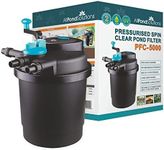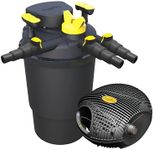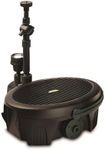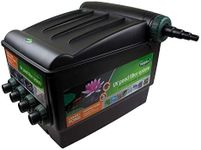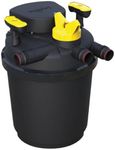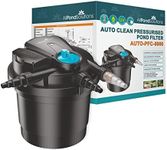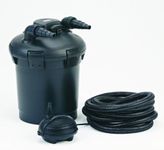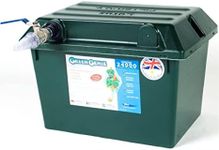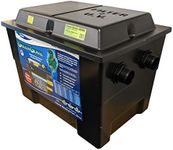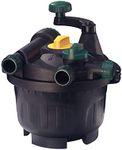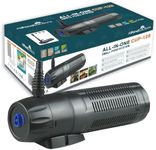Buying Guide for the Best Pond Filters
Choosing the right pond filter is crucial for maintaining a healthy and clean pond environment. A good filter will help keep the water clear, remove debris, and support the biological balance necessary for fish and plant life. When selecting a pond filter, consider the size of your pond, the type of aquatic life you have, and how much maintenance you're willing to perform. Understanding the key specifications of pond filters will help you make an informed decision that suits your specific needs.Filter TypePond filters come in various types, including mechanical, biological, and UV filters. Mechanical filters physically remove debris and particles from the water, which is essential for keeping the water clear. Biological filters use beneficial bacteria to break down harmful substances, supporting a healthy ecosystem. UV filters use ultraviolet light to kill algae and pathogens, preventing green water and disease. Consider what your pond needs most: if you have a lot of debris, a mechanical filter is crucial; for fish-heavy ponds, a biological filter is important; and if algae is a problem, a UV filter can be very effective.
Pond Size CompatibilityThe size of your pond will determine the capacity of the filter you need. Filters are rated for specific pond sizes, usually measured in gallons or liters. It's important to choose a filter that can handle the volume of your pond to ensure effective filtration. If your pond is heavily stocked with fish or receives a lot of debris, you might need a filter rated for a larger pond than yours to handle the extra load. Always check the manufacturer's recommendations and consider going a size up if you're unsure.
Flow RateFlow rate refers to the amount of water that can pass through the filter in a given time, usually measured in gallons per hour (GPH) or liters per hour (LPH). A higher flow rate means more water is being filtered, which can be beneficial for larger ponds or those with a lot of fish. However, too high a flow rate can disturb the pond environment, especially in smaller ponds. Choose a flow rate that matches your pond size and the needs of your aquatic life. A good rule of thumb is to circulate the entire volume of the pond through the filter every two hours.
Maintenance RequirementsDifferent filters have varying maintenance needs. Some require regular cleaning and replacement of parts, while others are more self-sustaining. Consider how much time and effort you're willing to invest in maintaining your pond filter. If you prefer a low-maintenance option, look for filters with easy access for cleaning and minimal parts that need regular replacement. Keep in mind that neglecting maintenance can lead to reduced filter efficiency and poor water quality.
Installation and SetupThe ease of installation and setup can vary between different pond filters. Some filters are plug-and-play, requiring minimal setup, while others might need more complex installation procedures. Consider your comfort level with setting up equipment and whether you might need professional help. If you're a DIY enthusiast, a more complex system might not be an issue, but if you prefer simplicity, look for filters that are known for easy installation.
